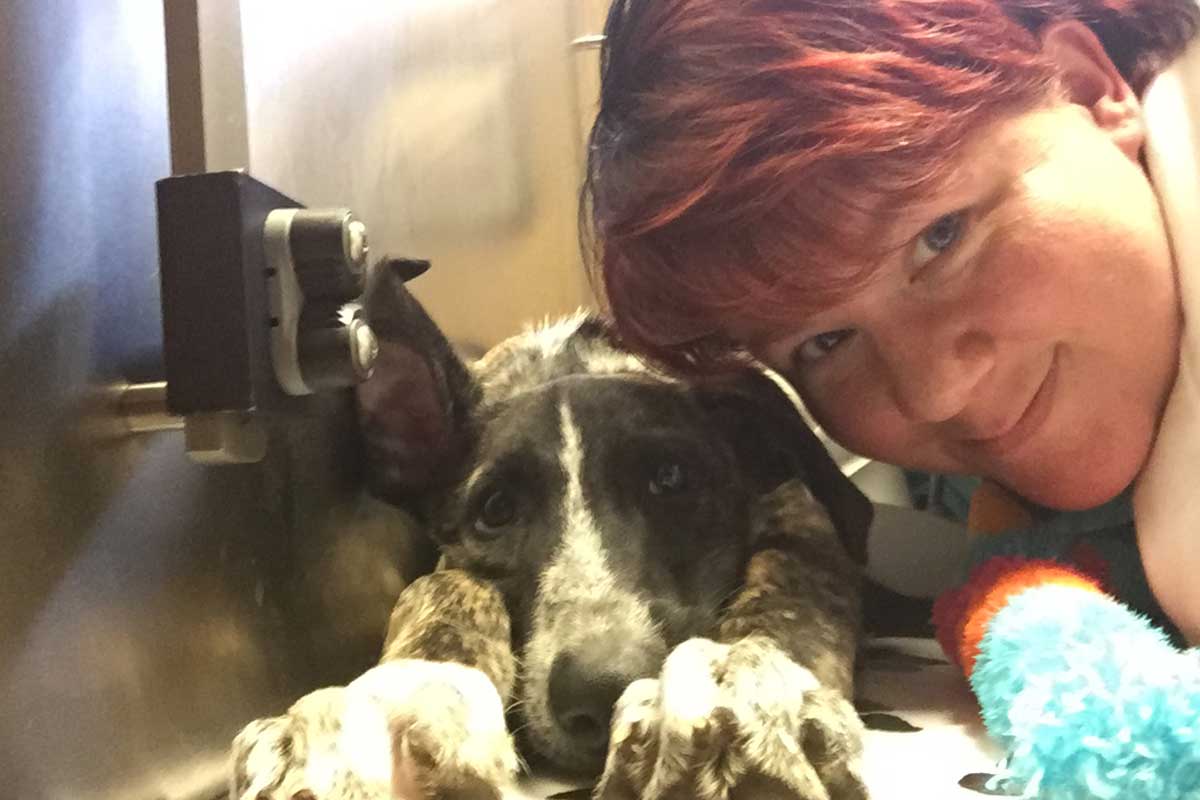When Christie Keith adopted a 12-week-old Greyhound/Scottish Deerhound cross-breed puppy named Gryphon, she wanted him to have something her other adopted dogs didn’t have: a good time at the vet.
Keith had adopted two adult Greyhounds who came to her with extreme fear and anxiety when they went to the vet — anxiety so severe they required medication. She was determined not to see her puppy develop the same fear, and asked Dr. Theresa DePorter, a boarded veterinary behaviorist and Fear Free Advisory Panel member, for a recommendation for a vet who would give her puppy a compassionate, stress-free visit.
DePorter recommended she see Dr. Kate Reynolds at Union Lake Veterinary Hospital. Reynolds was in the process of obtaining her Fear Free certification, and several of the practice technicians had been certified.
“When I got there, everyone was absolutely wonderful from the minute we arrived,” Keith said. “They had toys and treats for him, and everyone gave him nothing but positive and playful attention.”
Reynolds examined Gryphon with toys and food at every step, and gave him a vaccination while he licked peanut butter off the cabinet door. “He literally didn’t even know he’d had a shot,” Keith said. “There was no reaction at all.”
At the end of the visit, Gryphon was so relaxed and happy he didn’t want to leave the exam room. “I had to carry him out,” Keith said, laughing. “We couldn’t even lure him out with treats!”
Keith began bringing her adult dogs to see Dr. Reynolds as well. For her most fearful dog, a Greyhound named Stella, Reynolds made a house call to examine her for a chronic health problem. “I liked my former veterinarian,” Keith said. “He practiced good medicine and was very good with the dogs. But the reception area experience was so loud and chaotic that my Greyhounds would be shaking and crying, almost unable to walk, by the time we went into the exam room. And that was on Trazodone. It broke my heart.”
Recently, one of Keith’s other dogs, Tim, hurt his neck. Dr. Reynolds treated him with a laser. “He liked it so much that if he’d been a cat, he’d have purred,” Keith said. “I can’t imagine going to a veterinary practice now that doesn’t use this approach. It’s a whole new world for my dogs.”

This article was reviewed/edited by board-certified veterinary behaviorist Dr. Kenneth Martin and/or veterinary technician specialist in behavior Debbie Martin, LVT








